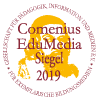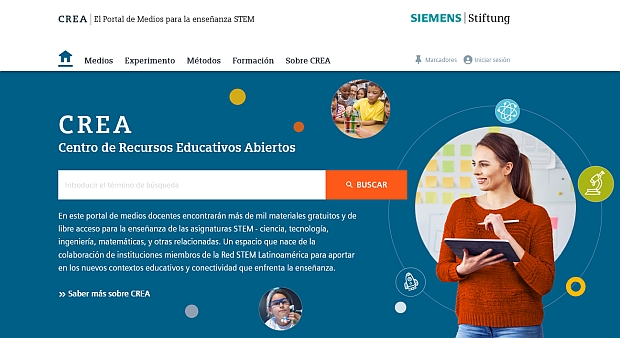Wind turbine – inside view
Image
Labeled graphic:
Rotor and nacelle (engine housing) of a three-bladed wind turbine with a horizontal rotation axis. The inside view of the nacelle is shown, and the individual components are labeled.
Type of media:
Image (119.2 kByte)
Last update:
2019-03-21
License:

This medium is made available under a CC BY-SA 4.0 international license.
What does this mean?
How to reference this medium

This medium is made available under a CC BY-SA 4.0 international license.
What does this mean?
How to reference this medium
Media package:
Description:
The three-bladed wind turbine with horizontal rotation axis shown here is the most common design for large wind power plants. The wind turbine consists of a rotor and a nacelle (engine housing), which are installed on a high tower.
How it works:
The anemometer measures the wind velocity. The data is sent to a monitoring computer, which controls the turbine and operates the yaw motor, which orients the wind turbine. When the turbine is in the optimum position relative to the wind, the wind applies a torque to the rotor blades: The wind turbine rotates (approximately 20 rotations/min) and, along with it, the drive shaft. The gearset converts the rotational speed of the rotor to the rotational speed needed for the generator (in Europe: 1,500 rpm or 3,000 rpm; in the United States: 1,800 rpm or 3,600 rpm). The generator generates the electric power, which is conducted down to the base of the wind turbine via cables. There it is fed into the grid. Under optimum wind conditions, the efficiency of a wind turbine is around 40–51 percent. (The theoretical maximum limit is around 59.3 percent, but this is practically unattainable.)
By the way: the brake prevents the wind turbine from rotating, for example, in violent storms or when it requires maintenance. (There are also wind turbines without gearsets; see the description in the “Generator for a wind turbine” medium.)
Information and ideas:
What are the advantages of a three-bladed wind turbine over a one-, two-, or four-bladed turbine?
It should be noted that wind turbines with a vertical rotation axis also exist (Savonius and Darrieus turbines). When are these designs used?
How it works:
The anemometer measures the wind velocity. The data is sent to a monitoring computer, which controls the turbine and operates the yaw motor, which orients the wind turbine. When the turbine is in the optimum position relative to the wind, the wind applies a torque to the rotor blades: The wind turbine rotates (approximately 20 rotations/min) and, along with it, the drive shaft. The gearset converts the rotational speed of the rotor to the rotational speed needed for the generator (in Europe: 1,500 rpm or 3,000 rpm; in the United States: 1,800 rpm or 3,600 rpm). The generator generates the electric power, which is conducted down to the base of the wind turbine via cables. There it is fed into the grid. Under optimum wind conditions, the efficiency of a wind turbine is around 40–51 percent. (The theoretical maximum limit is around 59.3 percent, but this is practically unattainable.)
By the way: the brake prevents the wind turbine from rotating, for example, in violent storms or when it requires maintenance. (There are also wind turbines without gearsets; see the description in the “Generator for a wind turbine” medium.)
Information and ideas:
What are the advantages of a three-bladed wind turbine over a one-, two-, or four-bladed turbine?
It should be noted that wind turbines with a vertical rotation axis also exist (Savonius and Darrieus turbines). When are these designs used?

Related media:
Wind power plant (interior view) (Interactive)
Learning resource type:
Illustration
Subjects:
Physics; Technology
Grade levels:
Grade 5 to 6; Grade 7 to 9; Grade 10 to 13
School types:
Middle/high school; Vocational training
Keywords:
Energy; Power generation; Renewable energy; Wind power plant; Electric power generation; Energy conversion; Energy source; Renewable energy; Source of energy; Wind power plant; Wind turbine
Bibliography:
Siemens Stiftung Media Portal
Author:
MediaHouse GmbH
Rights holder:
© Siemens Stiftung 2018


